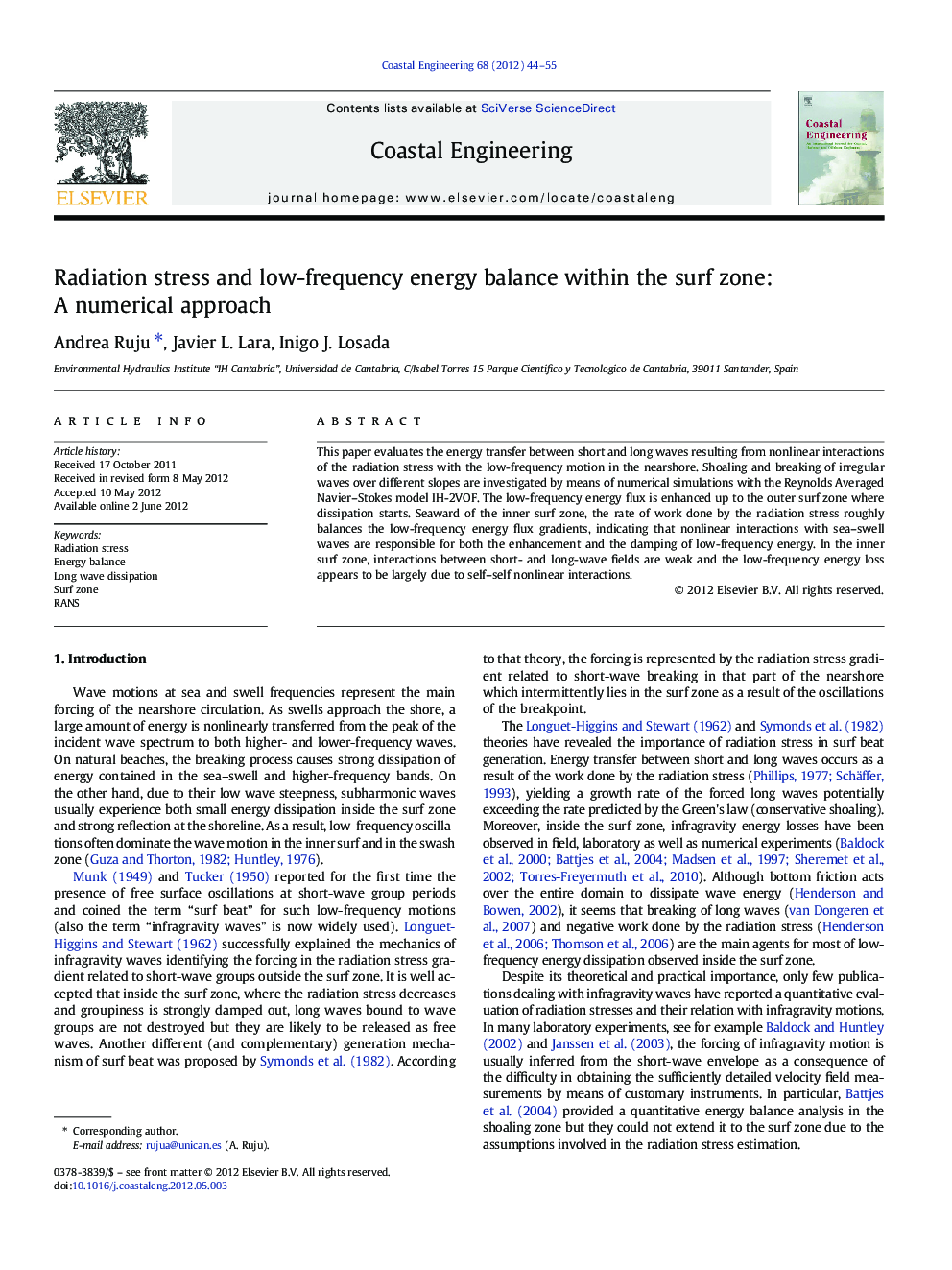| Article ID | Journal | Published Year | Pages | File Type |
|---|---|---|---|---|
| 1720938 | Coastal Engineering | 2012 | 12 Pages |
This paper evaluates the energy transfer between short and long waves resulting from nonlinear interactions of the radiation stress with the low-frequency motion in the nearshore. Shoaling and breaking of irregular waves over different slopes are investigated by means of numerical simulations with the Reynolds Averaged Navier–Stokes model IH-2VOF. The low-frequency energy flux is enhanced up to the outer surf zone where dissipation starts. Seaward of the inner surf zone, the rate of work done by the radiation stress roughly balances the low-frequency energy flux gradients, indicating that nonlinear interactions with sea–swell waves are responsible for both the enhancement and the damping of low-frequency energy. In the inner surf zone, interactions between short- and long-wave fields are weak and the low-frequency energy loss appears to be largely due to self–self nonlinear interactions.
► Irregular waves are investigated by means of numerical simulations. ► The energy balance analysis is extended over the surf zone. ► In the middle surf zone energy is transferred back to short waves. ► In the inner surf zone the long-wave dissipation is due to self–self interactions.
